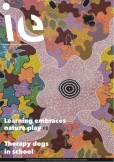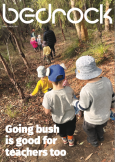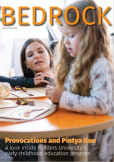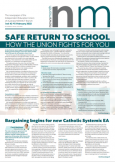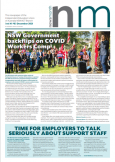As a teacher, your ideas of time management may not match up with those of your students. It can be challenging to balance progressing through the curriculum while creating a positive classroom that supports student wellbeing, voice and choice. Daniel Cohen of the Teacher Learning Network explores 10 ways to manage students’ behaviour and increase their productivity.
Have a plan
Consider the problems you already know about and plan ways to prevent them. Being mindful of what we already know about our students, both inside and outside of school, can help us understand what will help them stay on task. Remember that our own feelings and emotions have an impact on classroom dynamics. Focusing on our own triggers and setting goals for what we aim to achieve will help focus attention on the lesson at hand.
Clear expectations
There are many rules and expectations within school environments for students and staff. Stating them clearly ensures everyone understands the boundaries, and involving students in discussions about classroom expectations will create a sense of ownership and responsibility. Having clear processes and consequences, both positive and negative, means time doesn’t need to be spent debating issues. Plan opportunities for students to have fun and collaborate so they understand when it is OK and when it’s not.
Achievable goals
We often set big goals for ourselves and our students but forget to look for smaller wins along the way. Setting a series of smaller, achievable goals that build towards larger ones will sustain focus. Consider the difficulty of any goal and factors outside of school that impact on any particular student. Is the goal too hard or inappropriate? Revisiting it and setting a new one may be necessary.
Incorporate student interest
This doesn’t need to be big or spectacular. Try small adjustments that incorporate the interests of one or two students at a time. Any effort to make the classroom a little more fun will help keep attention on the task at hand.
Early intervention
Early intervention can avoid escalation and major disruptions. Take opportunities to intervene early and redirect behaviour and attention. Look for signs that an issue is brewing. Knowing your students and looking for their triggers will allow you to recognise behaviours that indicate agitation. Dealing with it early and helping students recognise the signs themselves can help them take responsibility for their actions and stay on task.
Behaviour management plan
Identify in writing what students can do to calm down when they get agitated. Include an action, a location and a time limit. For example, “do some drawing on the classroom steps for five minutes” or “get a drink from the taps next to the office for three minutes”. Allow students to select their own methods of calming down. Strategies for calming down and focusing should be a part of classroom culture rather than an extra thing imposed on certain students. This way everyone can make good choices about staying focused on their work.
Encourage ownership and belonging
Every student deserves to feel they belong at school and in the classroom, and a welcoming teacher is an important influence. There are subtle ways to do this: display students’ work around the room; create a seating plan that allows students to interact; plan opportunities for students to work in groups that enable them to socialise while being productive.
Clear strategies to address issues
Dealing effectively with issues as they arise prevents them escalating into difficult situations. Adopt a clear procedure that everyone understands and avoids the whole class being disrupted. For example, students can notify the teacher of an issue by writing on a sticky note and putting it on the board. A meeting process with defined roles will ensure everyone can have their say and the issue remains in focus. Stick to facts rather than unrelated personal commentary.
Student voice and student choice
Students want to be heard and involved in decisions about their day. The lack of opportunity for this can lead to frustration and disruption. Offer choice where possible; for example, topic selection and deciding whether work is to be completed on paper or a computer. Communicate clear boundaries around the choices students can make. Having open and honest discussions with them can be challenging but can also lead to effective collaboration and greater engagement.
Check in with students
Most children don’t often get to decide much of what happens to them, so they tend to appreciate when people show an interest in their lives. Simply asking how they are indicates support. Teachers are role models, so demonstrate the behaviours you’d like to see from the students. Show an interest in their lives and keep promises. Share your own stories, where appropriate, if you want students to share stories with you. Most importantly, look for ways to have fun.
Daniel Cohen is the Program and Systems Co-ordinator for the Teacher Learning Network (TLN).













